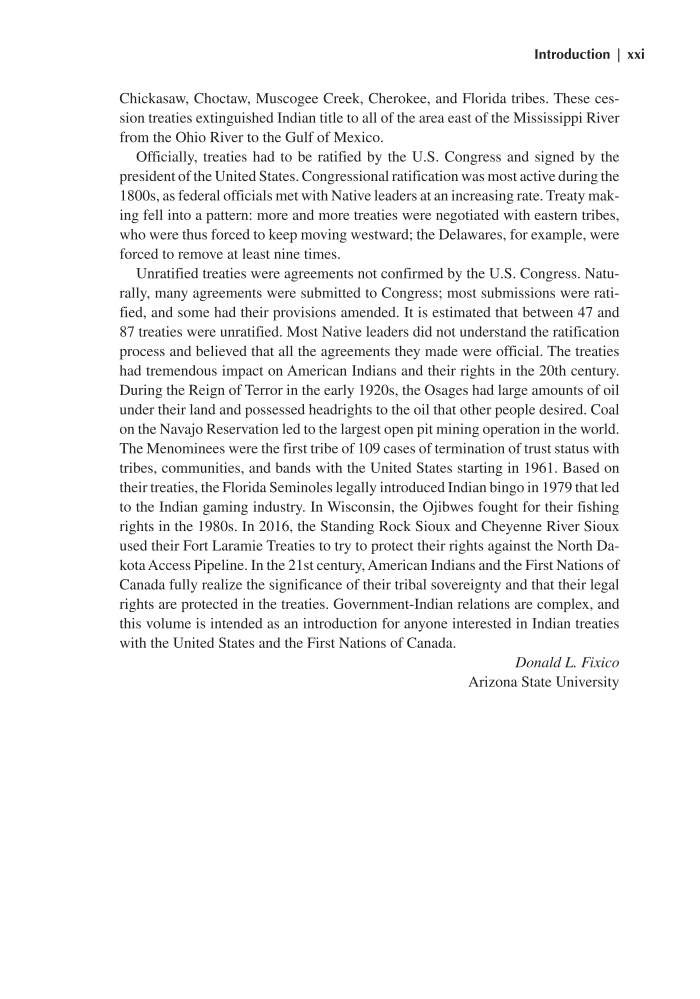Introduction | xxi Chickasaw, Choctaw, Muscogee Creek, Cherokee, and Florida tribes. These ces- sion treaties extinguished Indian title to all of the area east of the Mississippi River from the Ohio River to the Gulf of Mexico. Officially, treaties had to be ratified by the U.S. Congress and signed by the president of the United States. Congressional ratification was most active during the 1800s, as federal officials met with Native leaders at an increasing rate. Treaty mak- ing fell into a pattern: more and more treaties were negotiated with eastern tribes, who were thus forced to keep moving westward the Delawares, for example, were forced to remove at least nine times. Unratified treaties were agreements not confirmed by the U.S. Congress. Natu- rally, many agreements were submitted to Congress most submissions were rati- fied, and some had their provisions amended. It is estimated that between 47 and 87 treaties were unratified. Most Native leaders did not understand the ratification process and believed that all the agreements they made were official. The treaties had tremendous impact on American Indians and their rights in the 20th century. During the Reign of Terror in the early 1920s, the Osages had large amounts of oil under their land and possessed headrights to the oil that other people desired. Coal on the Navajo Reservation led to the largest open pit mining operation in the world. The Menominees were the first tribe of 109 cases of termination of trust status with tribes, communities, and bands with the United States starting in 1961. Based on their treaties, the Florida Seminoles legally introduced Indian bingo in 1979 that led to the Indian gaming industry. In Wisconsin, the Ojibwes fought for their fishing rights in the 1980s. In 2016, the Standing Rock Sioux and Cheyenne River Sioux used their Fort Laramie Treaties to try to protect their rights against the North Da- kota Access Pipeline. In the 21st century, American Indians and the First Nations of Canada fully realize the significance of their tribal sovereignty and that their legal rights are protected in the treaties. Government-Indian relations are complex, and this volume is intended as an introduction for anyone interested in Indian treaties with the United States and the First Nations of Canada. Donald L. Fixico Arizona State University
Document Details My Account Print multiple pages
Print
You have printed 0 times in the last 24 hours.
Your print count will reset on at .
You may print 0 more time(s) before then.
You may print a maximum of 0 pages at a time.




























































































































































































































































































































































































































































